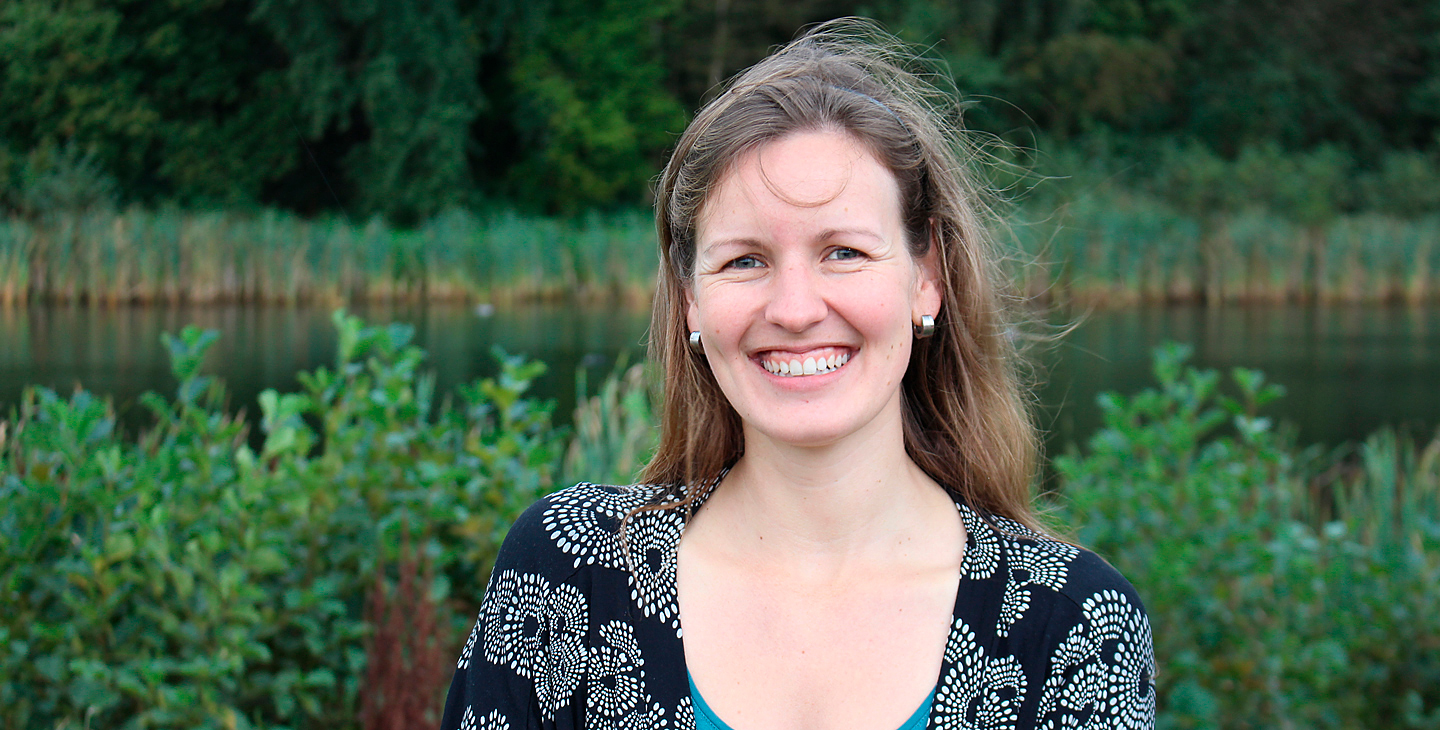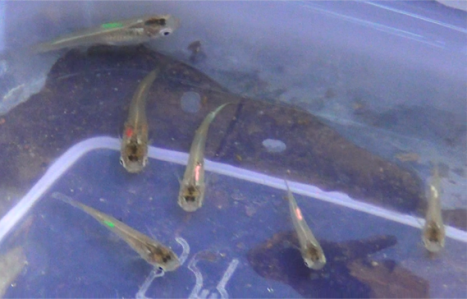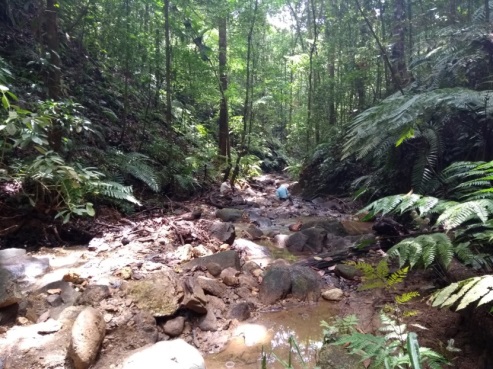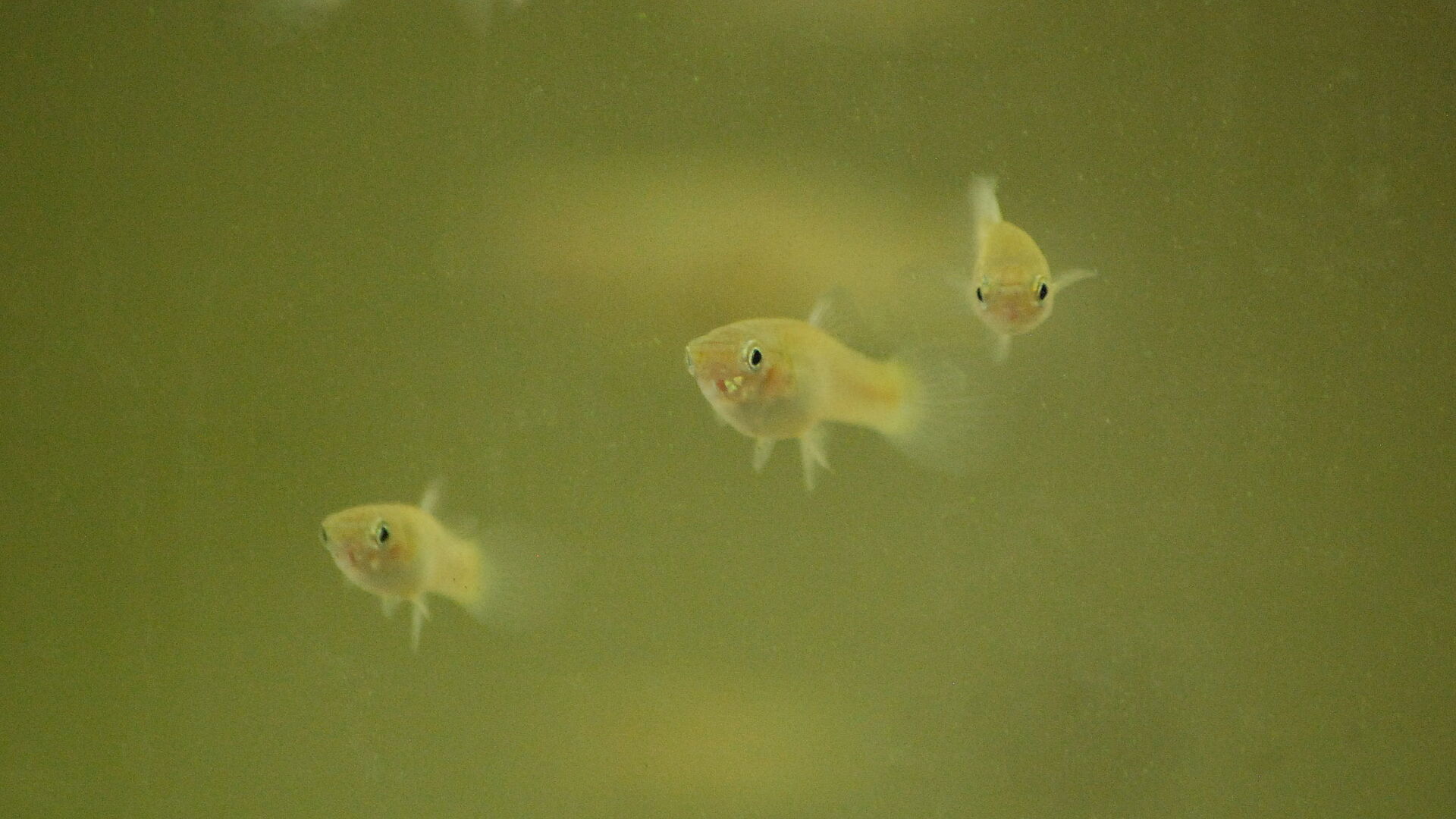Dr. Lysanne Snijders, you are a behavioural ecologist at the Leibniz-IGB in Berlin. Why do you study foraging guppies in the rainforest?
Lysanne Snijders: Finding food is one of the most important daily activities for animals, but this is not always an easy task. Trinidadian guppies live in rainforest streams that rapidly change between seasons, but sometimes also within a few hours. Here, they search for food, for example small fruits or insects that drop at unpredictable moments and places into the water. We repeatedly studied the same individual guppies in different natural pools and we discovered that some individual guppies were consistently better in finding food than others. This was somewhat surprising because they could not have used their memory of the previous pool to locate the food in the next pool. Some other traits or processes must have helped some fish to be more successful than others.
How did you observe those teeny tiny fishes looking for food?
Because many animals find food by looking at what others are doing, we were interested in finding out if variation in being social might have played a role. We gave the guppies individual colour marks, so we could follow individuals and study who was hanging out with whom. Based on these observations, we calculated how social each individual was and if this explained how many food items they found. We presented these food items at random moments and at various locations in a pool, using a fishing line attached to a rod. We were actually doing a sort of reversed fishing, since our only aim was to give the fish food and not make the fish food themselves.
Which observations did surprise you the most?
We discovered that more social individuals found more of the food items, possibly because they more quickly noticed when the other fish found food. Interestingly, we also discovered that males found more food resources than females. These males might have benefitted from being surrounded by many females, because guppies in pools with relatively more females also found more food items. Being attracted to females, which themselves are strongly attracted to the food, could have led the males to many of the different food items.





